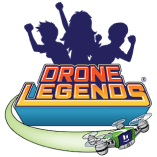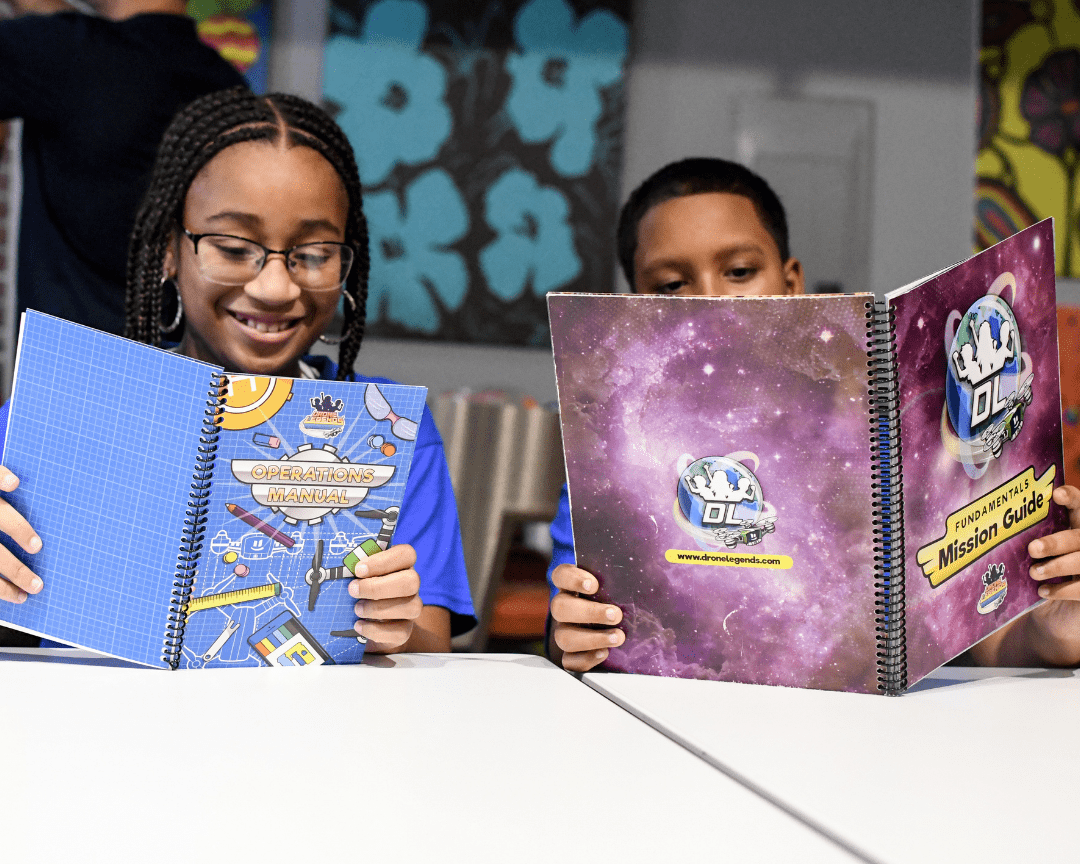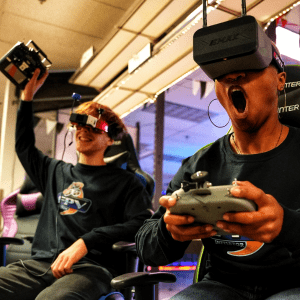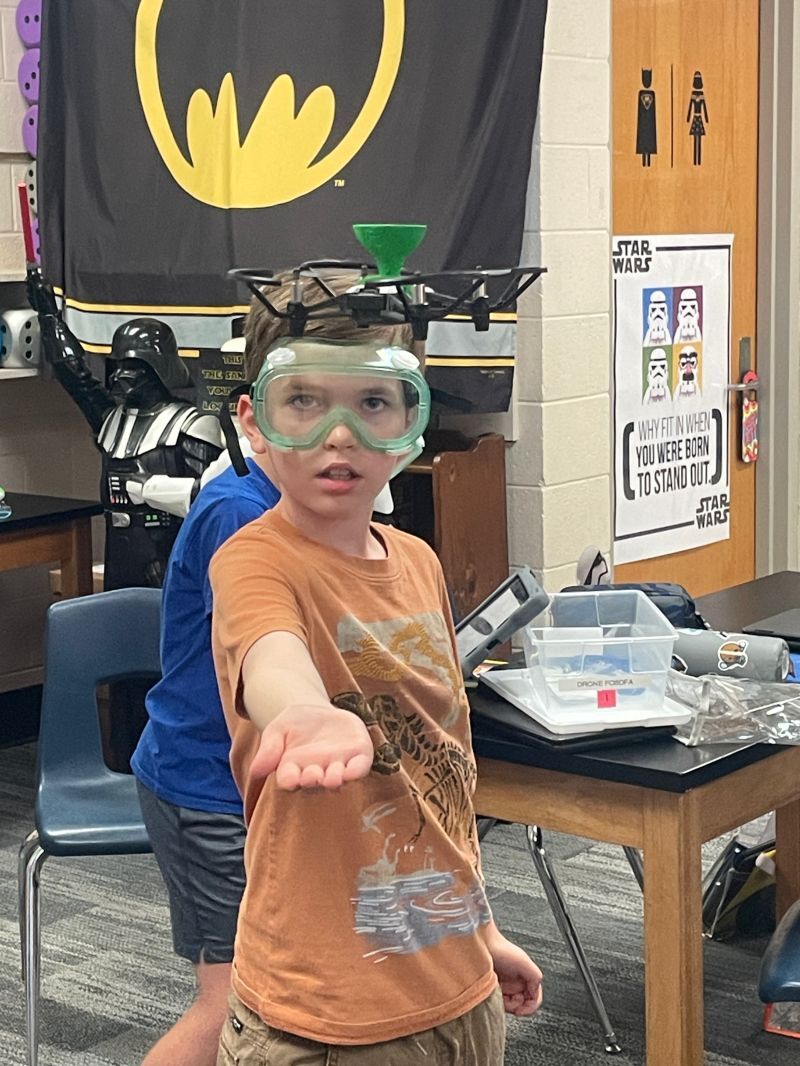Kids today are tech-savvy and hungry for new experiences.
With so many distractions, keeping their attention in the classroom can be tough. The team of educators behind the Drone Legends curriculum witnessed this firsthand… for years (decades, but we’re not saying how many). And the reality is, it isn’t going to get any easier to teach kids.
Teachers are up against huge competition for attention, and novelty isn’t the fundamental key to capturing a child’s imagination. It’s engagement and autonomy – the ability to work at their own pace and build on their past experiences to do something challenging but just within reach.
. . . . And to learn how to do it with their peers, rather than having a teacher tell them what to do.
. . . . And where they are allowed to take risks, make mistakes, and try again.
Kids need maximally engaging experiences that present real challenges to them. They don’t need to be handed answers and they don’t need to just be entertained.
We saw a huge gap in the market: between the bright and shiny edtech games and the far-too-dense edtech for STEM-savants, which is literally why Drone Legends exists. Our mission is to take something that is inherently fascinating to humans — the power of flight — and put it in the hands of inquisitive kids. Then, we send them on missions to overcome obstacles and face problems (without just handing them the answers). This is where the magic happens, and where real learning takes place.
This is our approach to drone lesson plans.
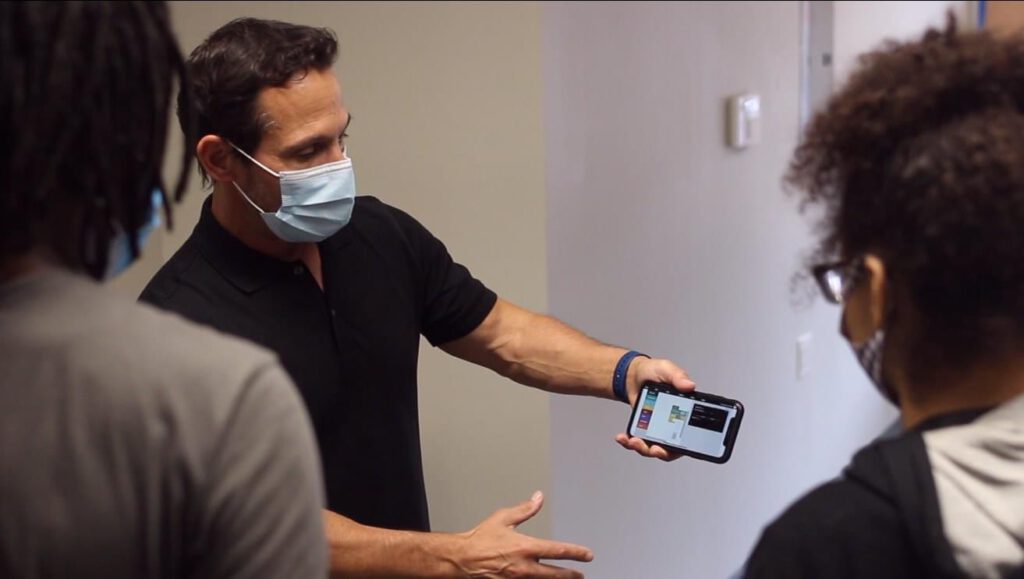
Drone Legends: How We Developed Our Drone Curriculum
Our future lies in STEM. Our kids’ future lies in STEM. STEM is roads and skyscrapers but it’s also drug development and transportation and automation in literally every field on earth. There is no sector untouched by STEM, and the jobs of the future will be related to science, technology, engineering, and math in a quantifiable way. So, this link exists.
Which means that it’s our job as parents, caregivers and educators to equip our children with the skills they’ll need to succeed.
The future is high-tech. But learning technology isn’t enough. Any kid can learn to pick up a drone and fly it . . . the tech is the easy part. What about solving a problem that feels just out of reach, or trying again after failing for the first or 17th time, or thinking outside of the box to see an answer that isn’t obvious? Drones are our vehicle for all those skills, but they are not the central focus.
That is precisely why we spent nearly a year working to develop a standards-aligned drone curriculum. Combining hands-on projects with immersive storylines and captivating artwork, the Drone Legends curriculum fosters teamwork-oriented experiences that are secretly academic.
What Drone Lesson Plans are Like
Every drone lesson plan in our curriculum was carefully designed to be fun, engaging, and informative. Guided by a friendly artificially intelligent drone named Gimbal, students work through narrative missions where every team member plays a vital role in solving real-world problems with drone applications.
Build on STEM Concepts
The Drone Legends curriculum is built on core STEM concepts, and missions (lessons) align with real-world scenarios, based on current events from the news and cutting-edge research, that are confronting scientists and engineers today. While working through their thematically-driven Mission Guides, students are challenged and inspired to think critically about how technological applications can solve a range of modern problems.
Using STEM Components
Each lesson incorporates essential STEM components, like physically building and engineering structures in the classroom; recording and converting measurements; and coding instructions into the DroneBlocks app to map out successful flight plans. Each mission requires teamwork and clear communication from start to finish.
An Unforgettable Experience
The result is an unforgettable experience that uses hands-on learning to teach students a whole array of skills.
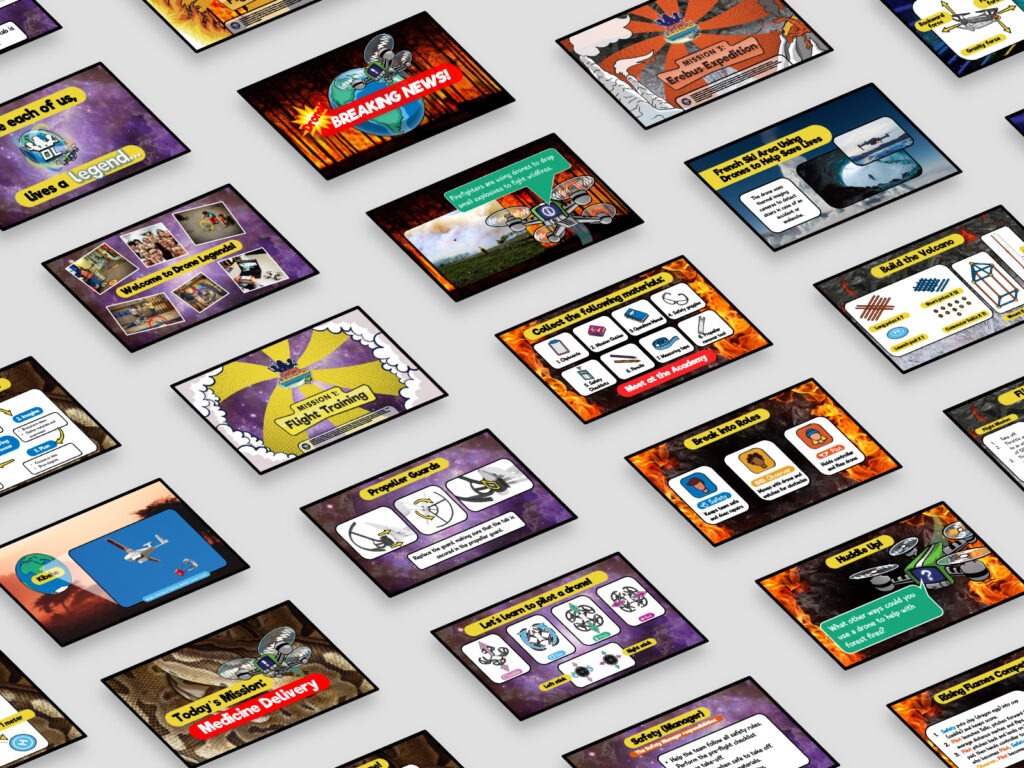
What You Get With Drone Legends Lesson Plans
Here’s what we already know: drone lesson plans need to be turnkey (have it all) and easy to use. Especially now, consistency in the classroom is usually up to the curriculum, which means anyone needs to be able to pick it up and guide the lesson.
Here’s what you get with Drone Legends:
- Teachers are equipped with an Educator Lesson Planner that can be adapted to their unique pedagogical approach.
- The Operations Manual full of technical information and learning resources.
- Drone Legends offers professional development and an educator portal for ongoing teaching support.
Learning Objectives
Whether applied in school, at summer camp, at home, or as part of an enrichment program, the Drone Legends curriculum provides meaningful, learning-rich experiences for students.
These are just a few of “standards” boxes we tick:
- Teamwork and Communication
- Critical Thinking
- Social-Emotional Skills
- Problem-Solving
- Hands-On Learning
- Real-World Knowledge Transfer
- STEM Career Skills
Problem-Based Learning
Our drone lesson plans were designed around Problem-Based Learning (PBL), a student-centered approach where learners solve a specific problem.
Here’s why problem-based learning is effective: Rather than being taught/delivered content and skills by the teacher, students are presented with a real-world problem that needs to be solved. They then go off and learn the content and skills necessary to solve that problem. The end result is the same, but in the first scenario, the student doesn’t know why they are learning the skills or content, so it feels irrelevant and abstracted from their lives. When the content and skills are abstracted from their experience, they are not compelled to remember the skills or content, or take them seriously, so the learning is very shallow.
We pose scenarios like this:
How to fight fire…
How to rescue animals…
How to deliver life-saving medicines…

These are things that humans encounter in real life. They’re problems with real-world application, and with really high stakes. Solving them is not only critical to completing a lesson, but to contributing to life on earth.
With lessons inspired by real-life problems, students learn about their world, become familiar with the types of tasks researchers perform daily, and gain exposure to various STEM-based career options.
Just imagine if you could be…
A firefighter
A physicist
A conservationist
A medical professional
We want kids to start imagining themselves, feeling like they have super powers to fight real problems in the real world. Because they do!
Social-Emotional Skills
Another core component of the Drone Legends curriculum incorporates Social-Emotional Skills (SEL). That’s because a holistic learning approach requires full-circle learning. Holistic approaches to education integrate all the different parts of a child’s life and personality to nurture their whole brain. Students don’t turn off their social or emotional self when they walk into math class, so why don’t we integrate those parts of their life into the math class. We should always see a child as a whole child, and we should always encourage a child to learn with their whole brain.
Our lessons were crafted to encourage identity and role development, group cooperation, imagination, self assessment, and reflection.
Learning Outcomes
Our drone lesson plan learning outcomes are specific and measurable. One thing that is great about DL Fundamentals is that the problems they need to solve are all self-evident. If they do the problem right, they can SEE that they did it right physically with their drone. They don’t get a random number “right answer” that they check in an answer key. This is much closer to real-world experience – when I build a fence, I know whether or not I did my calculations right when I finish the fence and it is straight, upright, and beautiful looking.
The final steps of every mission include performing a successful flight and reflecting on the process, making any necessary adjustments.
Drone lesson outcomes include the following:
- Observation and Data Collection — Each drone lesson requires keen observation, with team members collecting essential data to complete their mission. This includes taking measurements and writing down clear, accurate instructions for their peers.
- Mathematical Skills — Students take accurate measurements and perform mathematical conversions in order to complete their missions.
- Communication Skills — Clear communication is a crucial part of every drone lesson. In some cases, selected team members must complete tasks without looking, relying only on instructions from their teammates.
- Coding Knowledge — Once students have gathered the necessary information and performed the appropriate conversions, they must translate this information in a clear and concise way. By inputting their data into the DroneBlocks app, students program a flight map in order for their drone to fly an unmanned mission.
All educators understand that acquiring new skills comes with a learning curve and more than a few failed attempts. This, of course, forms the basis of all knowledge acquisition. By making calculated attempts, evaluating the outcome, and making any necessary adjustments before trying again, tomorrow’s innovators gain priceless skills and develop rich inner resources to help them take on life’s greatest challenges.
Cross-Disciplinary STEM Learning
STEM learning encompasses so many vitally important disciplines. By engaging kids in STEM-based programs, we create building blocks of knowledge that grow over time.
Reflection Phase
Skills like critical thinking and problem solving are transferable not only within STEM disciplines, but in all areas of life. That’s why each drone lesson includes that reflection phase, so students are encouraged to think about how the concepts they’ve learned can be applied in other areas.
Soft Skills and STEM
While STEM-based programs certainly encourage the acquisition of hard skills like math and science, soft skills are part of our drone curriculum as well.
Concepts like perception, resilience, creativity, reasoning, and collaboration are built into every drone lesson, ensuring a well-rounded learning experience that students can carry into all aspects of life.
Download a FREE Drone Lesson Plan
The magic of a drone lesson is in the doing. Whether you are an educator, administrator, or parent, you can use our drone lesson plan… today.
DOWNLOAD A FREE DRONE LESSON PLAN to see it for yourself.
It’s never too early to challenge kids to go deep. These Legends are capable of more than we could ever dream!
If you’d like to learn more about how drone lessons can benefit students in the classroom, the Drone Legends blog is an excellent resource for information and inspiring ideas.
If you have any questions, feel free to connect with the Drone Legends team today.
